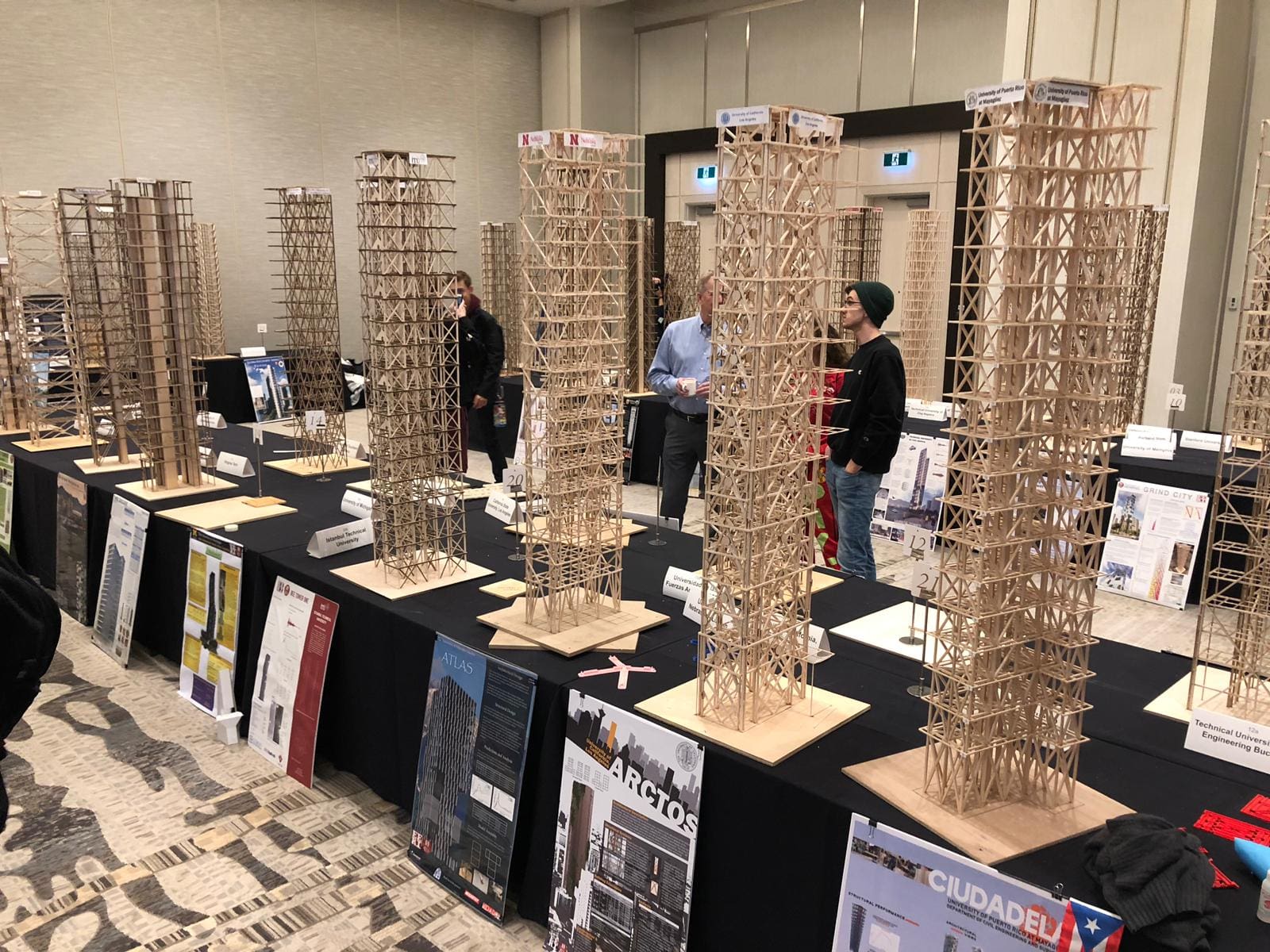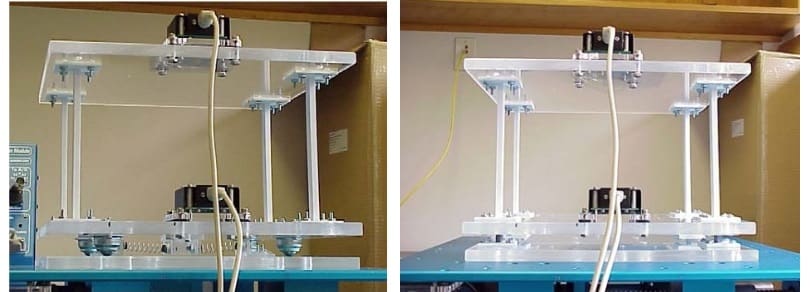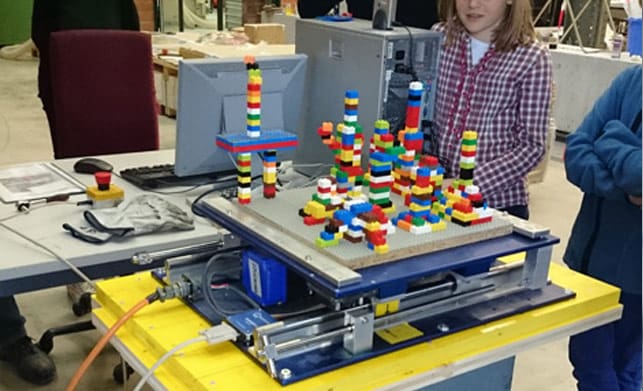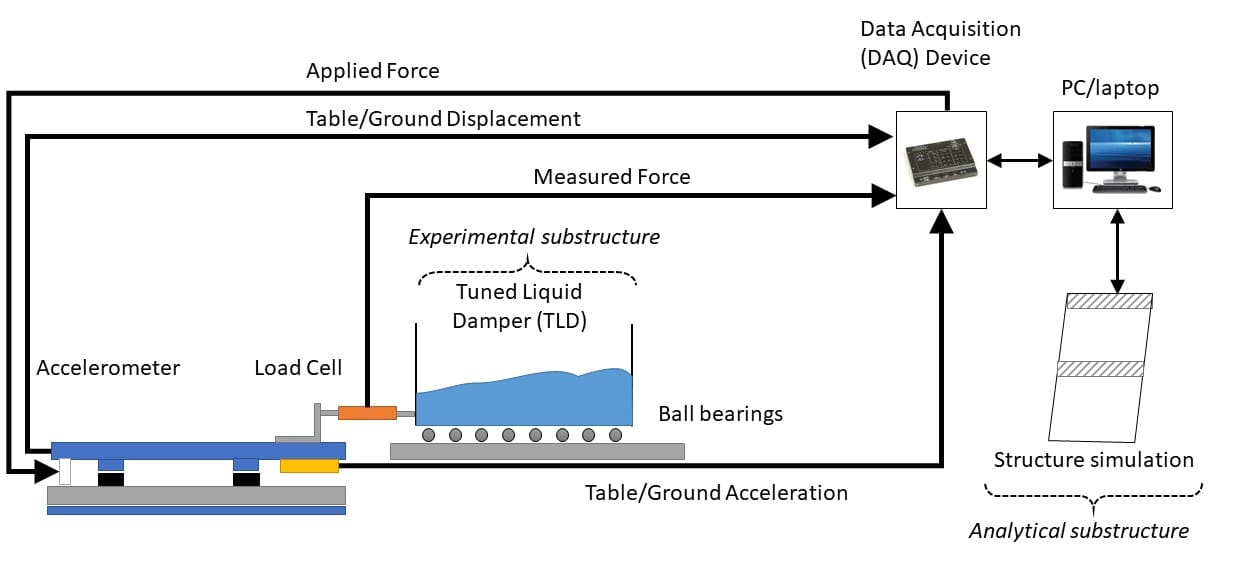
In my previous blog posts, I looked at the active and semi-active mass damping techniques. These techniques help protect buildings from potential structural damage caused by seismic ground motions and high winds. In this blog post, I want to focus on the more commonly used passive damping methods. Passive damping relies on some sort of energy dissipation but does not require any actuators, e.g., a motor to move a large translation mass. That makes the passive damping techniques easier and cheaper to implement. Let’s look at two types of passive damping: pendulum tuned mass dampers and tuned liquid dampers.
Pendulum Tuned Mass Dampers
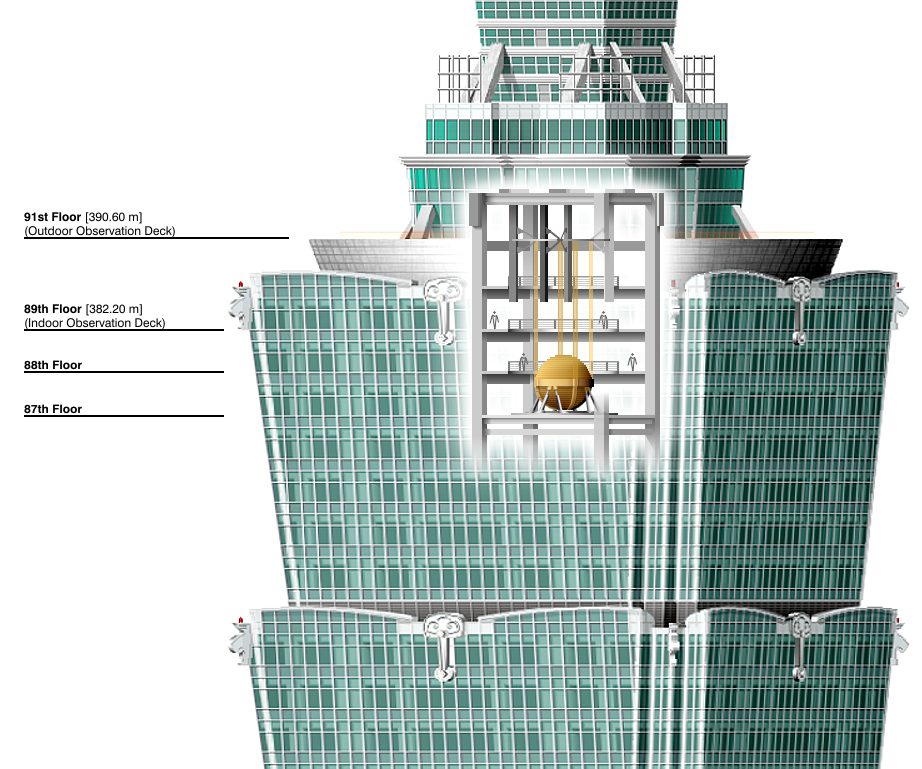 A Pendulum Tuned Mass Damper consists of a mass suspended on a pendulum. Under the seismic or wind loads, the pendulum naturally sways against the building’s motion and effectively reduces its displacement. By moving the mass along the pendulum shaft, it is possible to tune the damper to the resonant frequency of the structure where the building will sway the most. The most famous example of a structure using a pendulum mass damper is the Taipei 101 building.
A Pendulum Tuned Mass Damper consists of a mass suspended on a pendulum. Under the seismic or wind loads, the pendulum naturally sways against the building’s motion and effectively reduces its displacement. By moving the mass along the pendulum shaft, it is possible to tune the damper to the resonant frequency of the structure where the building will sway the most. The most famous example of a structure using a pendulum mass damper is the Taipei 101 building.
Image: https://commons.wikimedia.org/wiki/File:Taipei_101_Tuned_Mass_Damper.png
Demonstrating How Pendulum Mass Dampers Work
Dr. Shirley Dyke and her team from Purdue University wanted to show students how pendulum mass dampers work. To demonstrate the concept, they created the MDOF System: Vibration Absorber experiment. Their setup included the One-floor Active Mass Damper (AMD-01) structure from Quanser. I mentioned this structure in the Translational Tuned Mass Dampers post, here they use it without the motorized cart.
In their experiment, the team mounted the AMD-01 structure on the Shake Table II, which provided the seismic ground motion. First, students measured the acceleration of the structure without the pendulum mass damper, using various table ground motion profiles. Then they ran the experiment with the pendulum damper mounted on the AMD-01:
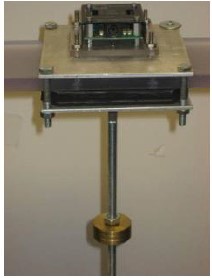 Pendulum mass damper used for the MDOF system: Vibration Absorber experiment. Image courtesy of Dr. Shirley Dyke
Pendulum mass damper used for the MDOF system: Vibration Absorber experiment. Image courtesy of Dr. Shirley Dyke
Applying the same signals to the Shake Table II as in the previous test, students measured the acceleration of the floor with the pendulum. Comparing the results, students saw a significant reduction in floor accelerations when using a mass damper and could clearly see the effectiveness of this passive mass damping technique.
Tuned Liquid Dampers
Another popular passive damping technique uses Tuned Liquid Dampers (TLD). They are similar to the Pendulum Mass Dampers, but in this case, a water tank serves as a pendulum mass. That makes the solution quite elegant, as the water tanks can serve multiple purposes. The tanks help effectively reduce the motion of tall buildings caused by winds or earthquakes. At the same time, they can serve as water storage for the building’s air conditioning system. The Tokyo International Airport Tower, for instance, uses this technology.
For the optimal reduction of the swaying of the structure, a proper design of the TLD water tank is critical. Predicting the motion of water in the tank, known as sloshing, and its frequency represents a significant challenge because it is very nonlinear. It is therefore difficult to obtain an accurate model of a TLD, especially one representing sloshing over a range of operating conditions. Many researchers took an interest in this topic and explored methods to develop accurate models of TLDs.
Modeling Tuned Liquid Dampers
A great example of such research is the work of the team from the University of Toronto, Experimental and numerical investigations of the dynamic interaction of tuned liquid damper–structure systems (2013). Using a finite volume method/finite element method, the authors developed a new numerical TLD model. Together with three TLD models from the literature, they validated their model using the real-time hybrid simulation (RTHS) framework.
Hybrid simulation combines physical testing with numerical simulations. The method is extremely useful in investigating the performance of complex structures. Such structures cannot be simply scaled-down for physical testing. Performing pure numerical simulation has its own limitations. In the hybrid simulation, only the critical components of the structure, e.g., dampers or base isolators need to be physically tested. The other components of the structure are modeled analytically. Real-time hybrid simulation performs the physical testing and simulations in a very small increment of time.
Hybrid Simulation Helps Compare Accuracy of TLD Models
The figure below illustrates the hybrid simulation setup used by the team from the University of Toronto. They connected their Tuned Liquid Damper to the Quanser Shake Table II. The team measured the force exerted on the TLD through a load cell and measured the position and acceleration of the Shake Table II with the on-board encoder and accelerometer sensors. The Shake Table II motor and sensors as well as the load cell are all interfaced to a Quanser data acquisition device.
For the computer simulation part, the team used a sophisticated dynamic model of a building, implemented in MATLAB/Simulink software. Using Quanser’s real-time prototyping software WinCon (a predecessor of QUARC), they could also run the hardware-based experiment through MATLAB/Simulink and combine the results with the simulation in real time.
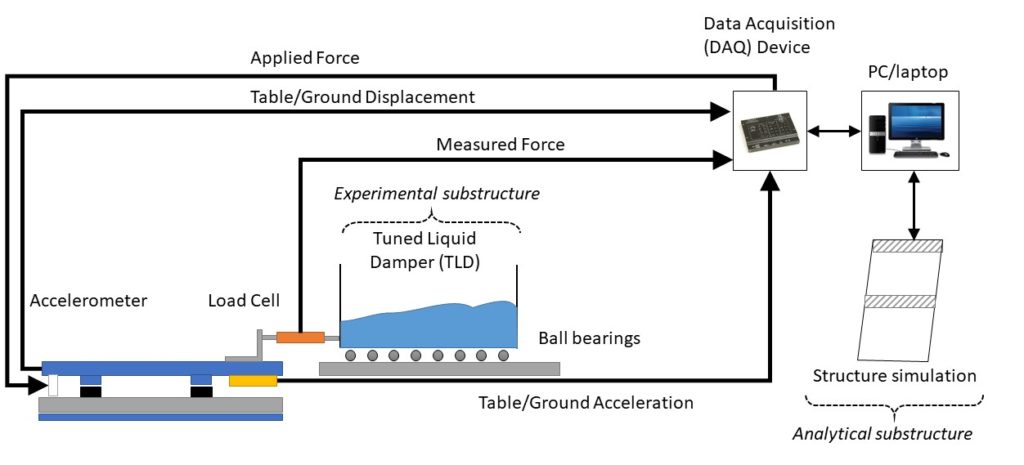
Hybrid simulation setup used to assess Tuned Liquid Damper models using the computer simulation and experiments on the Shake Table II
Using this hybrid-simulation approach, the researchers could change the dynamics of the structure and assess how accurate different tuned liquid damper models were for a variety of operating conditions. If they used a physical scaled-down structure instead of a simulation, they would be only able to perform the analysis and assessment for a structure with those fixed dynamics.
The team used the analytical model of a structure to find the wave breaking conditions when the wave accumulates enough energy and the crest of the wave overturns. They applied three different sinusoidal force inputs to assess week to strong wave breaking conditions.
By comparing the model simulation results with the experimental results from the TLD test-bed, the authors assessed the accuracy of three different TLD types of models. Their results showed that the TLD model they developed using the finite volume method/finite element method was the most accurate. The other tested models, especially under wave breaking conditions, did not capture the behavior as accurately.
Explore concepts of tuned mass dampers in your lab
Tuned mass dampers have been implemented in a number of different structures all across the world. With their proven effectiveness and increased feasibility, due to improvements in technology, tuned mass dampers are becoming increasingly popular. Thus it’s important for structural engineering students to get exposed to these concepts, and to make it easier for researchers to test their work experimentally. As the examples in this blog post illustrate, you can explore the concepts of tuned mass dampers effectively in a lab, without the need for real-size structures or large-scale shake tables.


